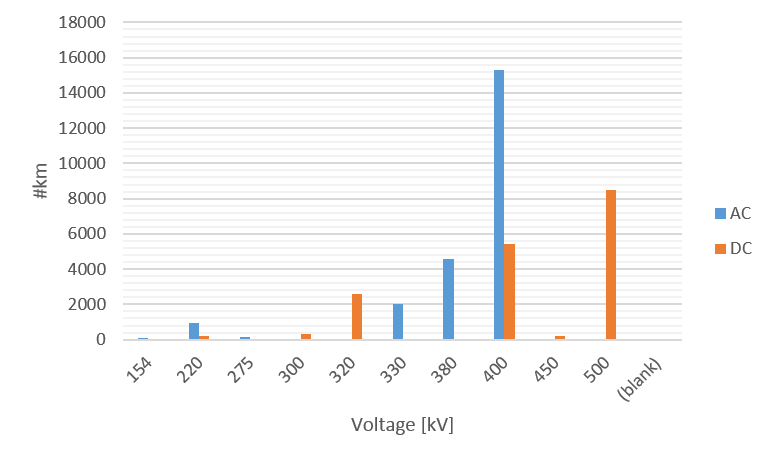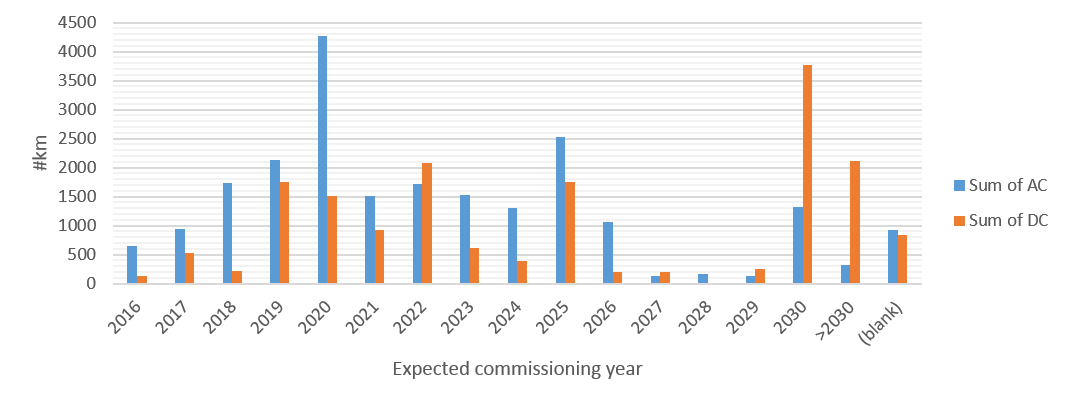A resilient portfolio of tailor-made investment solutions
“Future electricity grids will rely more on technologies that confer resilience and flexibility of operation than historical grids, so technology development must continue, even for relatively mature functions.” Richard Charnah, T&D Europe
The TYNDP provides a resilient picture of reinforcements on transmission grids, confirming in 2016 the TYNDP 2014 project portfolio. Some exceptions exist, mostly “concept projects” that were in a very early phase in 2014 that have proved technically unfeasible since. Still, the TYNDP2016 process has continued analysing several long-term scenarios and planning cases, and identified new TYNDP project proposals in the Regional Investment Plans 2015, mostly tagged as ‘future projects’ in the CBA analysis.
To come to that conclusion, thousands of market situations considering practically all hazards that may affect the power system have been simulated and processed for every scenario. Frequent situations or rare ones resulting in particularly extreme flow patterns (e.g. peak loads in winter or summer, with extreme but likely low or high wind/solar generation) are then spotted. The grid’s ability to withstand them is then tested, with possible remedial actions, and when these fail to solve the congestion it points at investment needs.
The complete grid modelling enables an accurate appraisal of every bottleneck and allows the most appropriate solution to be designed. To solve investment needs, TSOs have proposed tailor-made grid reinforcement solutions adapted to every specific situation. As a result, a large range of available technologies is implemented.
For 15% of the cases, upgrade of existing overhead lines can prove sufficient to achieve the required capacity increase with a limited impact on crossed areas. Increased grid transfer capability does not always match with increased network length thanks to restructuring; and when the network length increases, it is by 40% underground or subsea.
Conversely, DC technology is required to cross seas. In certain situations, it is also implemented onshore or to transport large amounts of energy on new interconnection corridors. These new DC lines set new operating challenges that TSOs are investigating, be it to ensure the safe operation of parallel AC and DC assets or to coordinate and optimise the use of several DC links to create an offshore grid across the northern seas.
Project designs thus resort to cutting edge technologies. Some of them are demonstrators of new technology and world premieres: the largest DC VSC equipment, the longest subsea DC interconnector, the longest AC cable route, DC and AC parallel operation, etc. are all part of the European grid in coming years.
Aside from the proposed extra high voltage investments, TSOs also contribute to the development of smart grids: the latest electronic tools and IT systems help optimise the operation of existing assets and especially monitor, forecast and control distributed RES and load management. The implementation of Dynamic Line Rating also appears as a project of pan-European relevance in this TYNDP 2016.

Figure 11 – TYNDP 2016 project portfolio – breakdown by technology and voltage

Figure 12 – TYNDP 2016 project portfolio – breakdown per technology and year of commissioning
| Type of element | Number of elements (total) | Number of elements (new) |
|---|---|---|
| Overhead Line | 248 | 159 |
| Phase-Shift Transformer | 7 | 5 |
| Subsea Cable | 49 | 45 |
| Substation (incl. converters) | 57 | 33 |
| Underground Cable | 15 | 15 |
Table 1 Overview of main elements